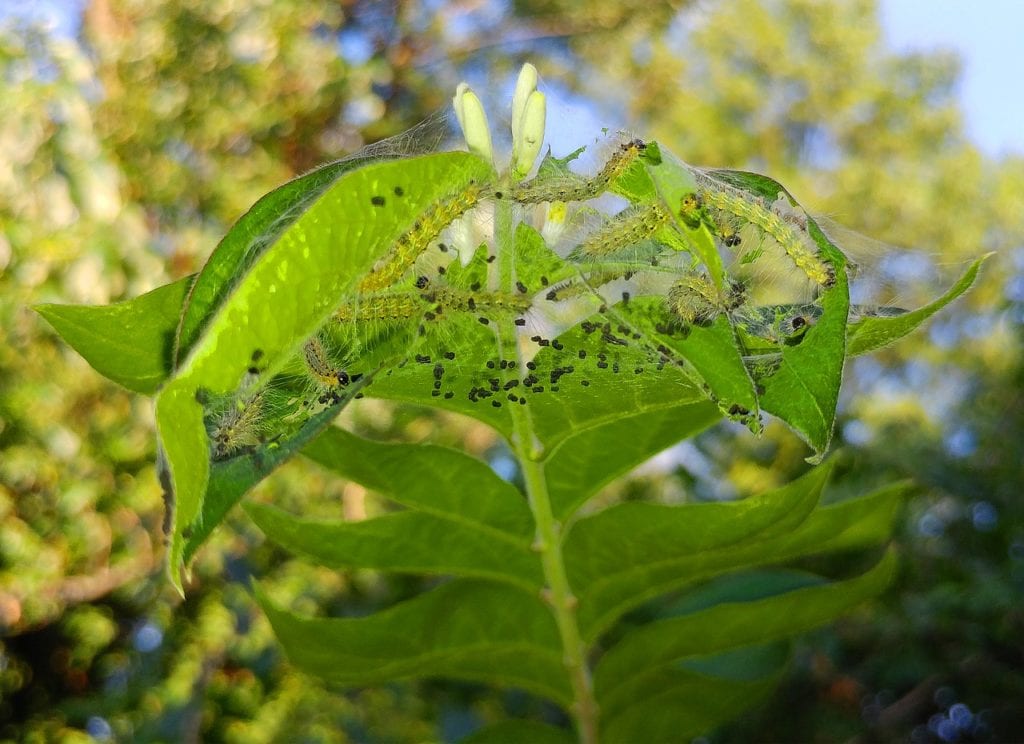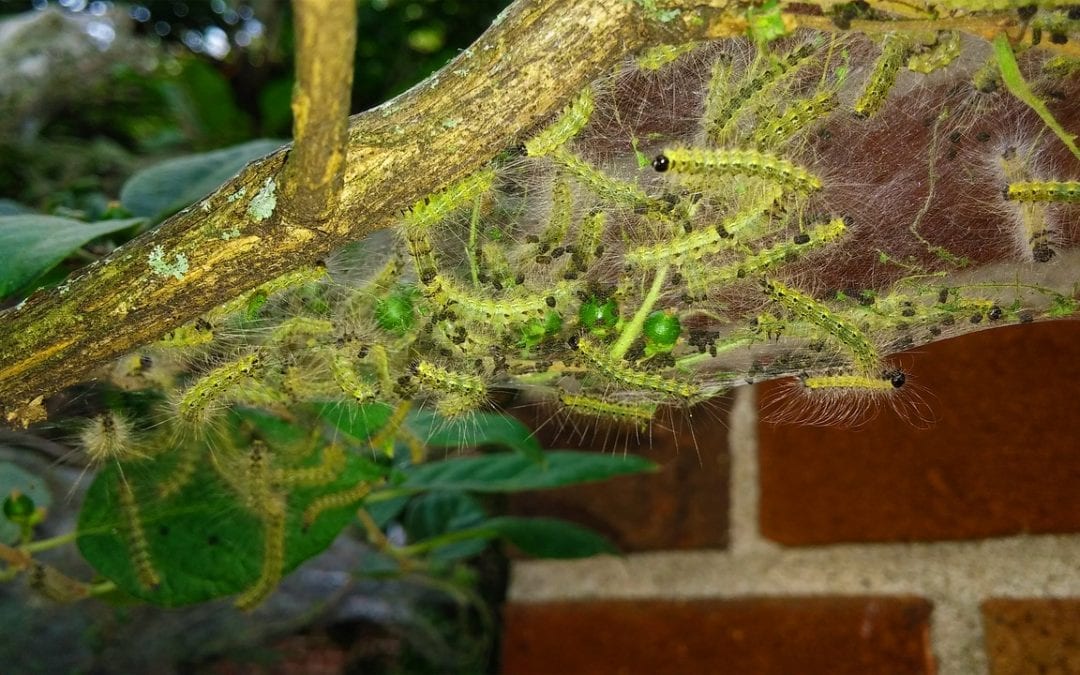Fall webworms love nothing more than to swoop in on your pecan trees and chomp away the foliage. Besides pecan trees, fall webworms also get interested in walnuts, persimmons, and some shade trees. Early detection of fall webworms is best as it is the easiest time to get rid of these pests. Let’s take a look at how to get rid of fall webworms.
Fall webworms are more of a pain to look at rather than detrimental to the long-term health and vitality of your pecan trees. The problem is that if heavy infestations of fall webworms persist throughout the years, the tree can eventually become more susceptible to other pest infestations, disease issues, and drought intolerance.
Controlling Fall Webworms
1. Fall webworms first appear as small baseball-sized webs hanging from the terminal ends of branches. This early sign of an impending infestation is the best time to get rid of fall webworms. They will quickly make their way up the limb, and more webs will appear throughout the canopy and higher in the tree, where it will be difficult to reach them.
- When fall webworms are at the terminal end of the branches, you can safely take a long-poled clipper and snip off up to 12″-18″ of the end of the pecan tree limb without irreparable damage to the tree.
- Nip off the small webs of pests and gather the limbs off the ground and haul to the trash.
- You may also be able to just use a raketo pull down or knock out the smaller webs that hang from lower branches.

2. Once fall webworms have moved past the baseball-sized webs, you’ve got a much bigger problem. The webs can take over entire branches in just a matter of days. Sometimes the webs grow to be 2′- 4′ in length! You basically have just a couple of options for control of fall webworms at this point.
- You can use a hook at the end of a very long pole to hook the webs and open them up to allow birds and beneficial insects to come in and eat the eggs and webworms.
- You can spray with Bt (Bacillus thuringiensis), but you will need a very powerful hose-end sprayer or possibly a commercial pressure sprayer to be able to reach the height of the webs. You should also add a drop of liquid detergent to your pesticide to act as a surfactant (to help the pesticide “stick”).
There is little to be done as far as prevention for fall webworms. You could try spraying the trees with a dormant oil in springtime, but the chance of covering all the leaves is not that great. Early detection is key when it comes to fall webworms. For more on the life cycle of these pests, you can visit TAMU Agrilife Extension.
~The Happy Gardener, Lisa Mulroy

